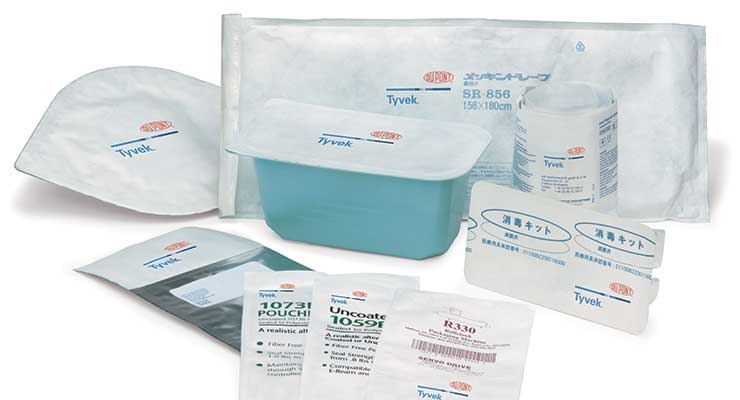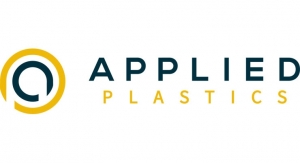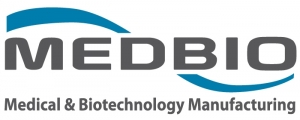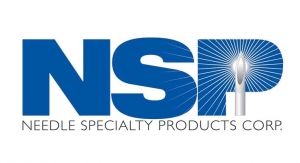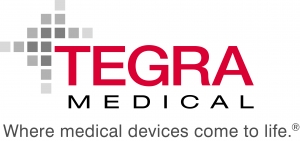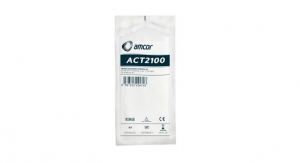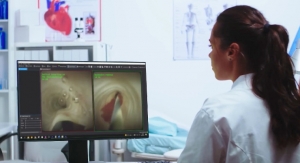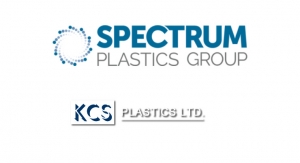Jennifer Benolken and Nicholas Packet, DuPont Tyvek® Medical & Pharmaceutical Protection04.03.18
Everyone knows that the packaging professional’s primary objectives are to design the device’s sterile packaging, put it through testing, and upon passing tests, voila—a sterile barrier package is born. End of story for sterile barrier packaging, right?
Not so fast…
It is true; the primary objective of the sterile barrier package is to get the product to the end user in a sterile and usable manner. However, another important objective of the packaging professional designing said sterile barrier packaging is to think about end-user perception and opinion of the packaging, which is where it can get a bit tricky, but is also where one can tap into the hidden value packaging brings to a product.
End-user perceptions are developed through the first sight of the package. Subsequently, opinions are formed through their use of the package. Between perception and opinion are assumptions and expectations. End users may be aware of some of their assumptions and expectations (e.g., assume and expect the packaging meets required tests and it provides a sterile barrier to the device within), and they may have some assumptions and expectations of which they are unaware. These exist at a subconscious level, where assumptions and expectations aren’t realized by that user until they are met or not fulfilled.
Package designs that meet end-user expectations are a minimum to a product’s purchase being entertained in the first place and don’t likely drive any future decisions about using a product. Delight (and decision to re-purchase) comes when packaging not only meets expectations, but exceeds them. Delight (a.k.a., value) comes from the assumptions and expectations the end user didn’t even know they had being met. Unfortunately, it’s those unknown assumptions and expectations, if not met, that can be equally detrimental—enabling poor opinions to be formed about a product and potentially resulting in fewer future sales.
Following are several ways in which one can uncover unknown assumptions and expectations, such that value can be designed into sterile barrier packaging, increasing opportunities to delight customers. By applying consumer experiences (the instances that annoy or delight), a strategy can be leveraged to develop and generate better thought and decisions.
Development
Let customers try the packaging ideas. Once several concepts have been developed, solicit feedback from customers. Everyone who touches a product’s packaging in a healthcare setting (from central storage, nurses, scrub technicians, etc.) should handle the packaging. The customer’s interaction with the package needs to be considered through all phases—from receipt through use (handling and storage in its final packaged configuration, storage of the system, labeling, opening, and disposal). A company should understand where its package is acceptable or isn’t. Ask users about their initial visual and tactile perceptions of the packaging (Does it look cheap? Does it convey confidence the sterile barrier is intact?). If the packaging prohibits customers from being able to use the product in a sterile manner or if they simply “hate” the packaging because it makes it more difficult to accomplish their jobs, a device could potentially be eliminated immediately and not be given a second chance. Giving customers an opportunity to use the packaging, along with the product, from storage to use can and will provide essential feedback to a company and help ensure the package design will be acceptable.
Consumer-related experience: Have you ever tried getting a product out of the packaging and gotten perplexed as to how the packaging could have been designed the way it was, because it was so unusable?
Internal Handling and Storage
The package designer should consider downstream operations to optimize manufacturing, transportation, sterilization, and distribution processes. The people handling a product are customers, too. Get feedback from those who will be working with the packaging in these areas. They will have ideas on what’s worked for them and what hasn’t (e.g., easy to handle/manage, causes of rework/scrap, etc.). Any aspects of the packaging design that enables a smoother workflow will allow those downstream to be more efficient. A package design that offers value to them and the company through reduced waste in time, materials, sterilization, and transportation costs should be one of the development goals.
Consumer-related experience: Have you ever purchased a product that says, “some assembly required” and once you get everything unboxed you think to yourself how am I going to do this? This is going to take forever! Those responsible for package manufacturing operations, handling, and sterilization could be feeling the same way with complex package designs that haven’t been vetted or optimized by your internal customers.
External Handling and Storage
See how a product will be handled and stored once it arrives at the healthcare facility (not how it is recommended to be handled and stored; these are two very different things). Customers may plan to handle and store a product in a different manner than the manufacturer intended. This can cause the packaging to degrade, be damaged, or stored in a location where it is less likely to be used. For example, the shelf carton is often removed as soon as the product arrives at the receiving dock at the healthcare facility. Can the contents withstand being handled safely in that manner? To further challenge the product’s sterile barrier system, rubber bands may be used to keep sterile barrier packaged product together. These handling conditions could generate challenges for the product or sterile barrier, resulting in damage. Regulatory bodies have recognized that the handling and storage of products may introduce unique hazards. The new Medical Device Regulation (MDR) in the European Union (EU), for example, has been updated to include the requirement that products remain sterile until the package is opened at the point of use (not just to the healthcare facilities’ receiving dock).
Consumer-related experience: Do you select the canned product that has a nice appearance or the dent? If the packaging is crumpled, do you question whether the product inside is still intact? Have you ever opened something and wondered if it had been tampered with due to it feeling like a “weak” seal? These questions can create doubt about a product’s integrity. The same rings true with a device company’s end users—“if it causes doubt, throw it out” is the healthcare worker’s mantra.
Product Selection
Make it easy for customers to identify what’s in the package. If the critical information a customer needs isn’t readily available when they need it, they will get frustrated and may choose someone else’s product. A competitor may provide product information in a more obvious manner (or allows the customer to see what’s in the package). Healthcare workers don’t have time to go hunting for answers.
Consumer-related experience: If you can’t easily find what you’re seeking in a store because you can’t locate it or it is unidentifiable, do you get frustrated and select a different brand or go to another store that makes its products’ information more obvious?
Product Removal from Packaging
Ensure a product is easy to remove from its packaging. Not only does the packaging need to keep the product sterile until the point of use, it needs to aid/assist in the device removal process. In “voice of the customer” evaluations, pay close attention to what is not being said by the people using the packaging. The people designing the package may be so familiar with what is supposed to happen during the opening process, they’re unable to see how it could be used improperly. This changes when they see someone using it in an unintended manner. The customers’ acceptance of a package design has become even more important with the recent release of the EU’s MDR—medical device products sold into the EU are required to have usability studies, including packaging.
Side note to keep in mind when you conduct your usability studies—when people know they are being watched they often change their behavior. If you can devise observation strategies that allow you to observe without people knowing they are being observed, you’re more likely to get to the best answer. For example: if a nurse is being watched, do you think she’s likely to pull that pair of scissors out of her pocket to open the package that is always a pain to open, or will she struggle to open it? Perhaps she won’t even pick up the very difficult package because she doesn’t want to have to struggle with it in front of people. Of course, no one is saying don’t be honest about your intentions—just see if you can find ways to minimize the impact.
Consumer-related experience: Have you ever cursed a packaging engineer because you can’t get into a water bottle or your cookies without destroying or spilling the contents? (Note: Even us packaging professionals have, too.) We’re guessing you’ve already thought of a myriad of other scenarios where packaging made it difficult to get to and/or use the product.
Look Beyond
Can the package design bring added value to the device itself? For example, is there an opportunity for it to be used to assist in the procedure? Perhaps the packaging can be used to aid in the set up or preparation for a procedure, or developed to hold/maintain control of the product when it’s not being used. Maybe it can facilitate the proper disposal of the product. Having a true understanding of the clinical setting and procedures for which the device will be used may present some unique opportunities where the packaging can differentiate the product through its value add.
Consumer-related experience: Think of your favorite packaging “surprises” you’ve had from purchases you’ve made and if they can be applied to your product’s packaging (e.g., dip or squeeze ketchup packets, re-sealable packages that help maintain product freshness).
The Packaging ROI
The aforementioned strategies can result in a number of benefits, some of which may not have been anticipated.
Fewer complaints and reduced returns: Great packaging design allows people to access the device and have confidence that what’s inside isn’t damaged (and is still sterile). Just like their consumer counterparts, healthcare end users only notice packaging when it upsets them—making them mad when they can’t open it easily, or weary that the product inside is not functional or sterile anymore. If users are presented with a package that doesn’t look worn and allows them to access the device easily, fewer complaints and product returns may result.
Packaging that doubles as marketing: Great packaging (and labeling) tells people what they need to know and subconsciously compels them to want to use it again. They won’t have questions about the device within, because they’ve already been answered. When customers know what to expect inside the package, they will select the correct product (and use it properly) and they will want to use it again (because it didn’t cause them problems).
Increase in sales: Great packaging encourages future purchases. When people have positive experiences with, and thus good feelings about a package (as opposed to fear or anxiety over using or getting into packaging), they will promote its use to decision makers, just as they will voice their irritation if it didn’t meet expectations. Similar to consumer products, a company may never know if customer expectations haven’t been met due to poorly designed packaging. How often does the average person submit complaints on the product packaging versus simply making a different purchasing decision next time? In fact, recent observations in a hospital show that often, poor packaging, particularly packaging that is hard to open or prone to breaches in sterility, just results in the item being thrown out in favor of another one. While this might be good for your short-term top line, in the long run, especially as hospitals become more data-oriented, a lot of wasted items could increase the total cost of using your product: a threat in the long term.
By applying a person’s consumer experiences when developing sterile barrier packaging, a designer may view the process in a different light. Well-designed packaging can be seen as a value-add for the overall product (leading to improved top and bottom lines), as opposed to a check box and/or product cost.
Conclusion
The previously outlined strategies must be thoroughly contemplated and properly planned for each specific situation prior to execution. Following are “final thoughts” and example cases offering additional considerations for the packaging design.
In usability studies, if the doctor is the primary audience for the device, ensure the person opening the package before the device gets to the physician is identified; these two individuals are not always the same. In operating theaters, it is often a scrub nurse or technician; in the emergency room, it may be the nurse or technician (or a doctor). Know the package’s “audience.”
Understanding how a product is stored, handled, and used will help a company prepare for the unexpected. Further, the importance of what is not said by those engaging with the packaging can, at times, be even more significant than what is being verbalized. Can observers anticipate what might happen? Watch for people struggling with the package (but not verbalizing what they’re struggling with), and ask to see storage areas (observe how people interact with packaging while they’re handling product, if products are being exposed to conditions or other elements the packaging materials cannot withstand, etc.).
Ask the people encountered during an investigation general questions about using packaging, in addition to those specific to the packaging under evaluation. Most people will reveal what they don’t like about packaging (when in a non-threatening environment) and their favorite packaging, as well as share their nightmare packaging stories. Provide different options and ask about them—which one conveys higher quality or which makes them doubt whether the product is really sterile? Know the message a product (and its packaging) is trying to convey. Hear what the investigation subjects have to say (as well as observe what they’re not saying) and incorporate that feedback into the design. Try to avoid asking leading questions; people will generally aim to please and may give the answers they think are desired.
Packaging design isn’t nearly as easy as it may seem. It can create problems if a developer isn’t careful, but it can also be a boon to business. Incorporate some (or all) of the points covered in this article in an upcoming project and see if unexpected benefits are achieved.
Jennifer Benolken, CPP, is an MDM specialist at DuPont Tyvek® Medical & Pharmaceutical Protection (http://MedicalPackaging.DuPont.com). She has 27-plus years of wide-ranging packaging industry roles including engineer, sales representative, and manager. Benolken earned her B.S. in manufacturing systems engineering at Kettering University; M.A. of international management from St. Thomas University. She has been a Certified Packaging Professional through Institute of Packaging Professionals since 2002, obtaining lifetime CPP status in 2012.
Nicholas Packet is an MDM specialist at DuPont Tyvek® Medical & Pharmaceutical Protection. He has 10-plus years of experience in the medical device packaging industry. From packaging engineer to MDM specialist, Packet has led packaging teams and engineering projects with consistent success. A graduate of Rochester Institute of Technology where he earned a B.S. in package engineering, he is an industry expert now supporting medical device manufacturers in their use of DuPont Tyvek®.
Not so fast…
It is true; the primary objective of the sterile barrier package is to get the product to the end user in a sterile and usable manner. However, another important objective of the packaging professional designing said sterile barrier packaging is to think about end-user perception and opinion of the packaging, which is where it can get a bit tricky, but is also where one can tap into the hidden value packaging brings to a product.
End-user perceptions are developed through the first sight of the package. Subsequently, opinions are formed through their use of the package. Between perception and opinion are assumptions and expectations. End users may be aware of some of their assumptions and expectations (e.g., assume and expect the packaging meets required tests and it provides a sterile barrier to the device within), and they may have some assumptions and expectations of which they are unaware. These exist at a subconscious level, where assumptions and expectations aren’t realized by that user until they are met or not fulfilled.
Package designs that meet end-user expectations are a minimum to a product’s purchase being entertained in the first place and don’t likely drive any future decisions about using a product. Delight (and decision to re-purchase) comes when packaging not only meets expectations, but exceeds them. Delight (a.k.a., value) comes from the assumptions and expectations the end user didn’t even know they had being met. Unfortunately, it’s those unknown assumptions and expectations, if not met, that can be equally detrimental—enabling poor opinions to be formed about a product and potentially resulting in fewer future sales.
Following are several ways in which one can uncover unknown assumptions and expectations, such that value can be designed into sterile barrier packaging, increasing opportunities to delight customers. By applying consumer experiences (the instances that annoy or delight), a strategy can be leveraged to develop and generate better thought and decisions.
Development
Let customers try the packaging ideas. Once several concepts have been developed, solicit feedback from customers. Everyone who touches a product’s packaging in a healthcare setting (from central storage, nurses, scrub technicians, etc.) should handle the packaging. The customer’s interaction with the package needs to be considered through all phases—from receipt through use (handling and storage in its final packaged configuration, storage of the system, labeling, opening, and disposal). A company should understand where its package is acceptable or isn’t. Ask users about their initial visual and tactile perceptions of the packaging (Does it look cheap? Does it convey confidence the sterile barrier is intact?). If the packaging prohibits customers from being able to use the product in a sterile manner or if they simply “hate” the packaging because it makes it more difficult to accomplish their jobs, a device could potentially be eliminated immediately and not be given a second chance. Giving customers an opportunity to use the packaging, along with the product, from storage to use can and will provide essential feedback to a company and help ensure the package design will be acceptable.
Consumer-related experience: Have you ever tried getting a product out of the packaging and gotten perplexed as to how the packaging could have been designed the way it was, because it was so unusable?
Internal Handling and Storage
The package designer should consider downstream operations to optimize manufacturing, transportation, sterilization, and distribution processes. The people handling a product are customers, too. Get feedback from those who will be working with the packaging in these areas. They will have ideas on what’s worked for them and what hasn’t (e.g., easy to handle/manage, causes of rework/scrap, etc.). Any aspects of the packaging design that enables a smoother workflow will allow those downstream to be more efficient. A package design that offers value to them and the company through reduced waste in time, materials, sterilization, and transportation costs should be one of the development goals.
Consumer-related experience: Have you ever purchased a product that says, “some assembly required” and once you get everything unboxed you think to yourself how am I going to do this? This is going to take forever! Those responsible for package manufacturing operations, handling, and sterilization could be feeling the same way with complex package designs that haven’t been vetted or optimized by your internal customers.
External Handling and Storage
See how a product will be handled and stored once it arrives at the healthcare facility (not how it is recommended to be handled and stored; these are two very different things). Customers may plan to handle and store a product in a different manner than the manufacturer intended. This can cause the packaging to degrade, be damaged, or stored in a location where it is less likely to be used. For example, the shelf carton is often removed as soon as the product arrives at the receiving dock at the healthcare facility. Can the contents withstand being handled safely in that manner? To further challenge the product’s sterile barrier system, rubber bands may be used to keep sterile barrier packaged product together. These handling conditions could generate challenges for the product or sterile barrier, resulting in damage. Regulatory bodies have recognized that the handling and storage of products may introduce unique hazards. The new Medical Device Regulation (MDR) in the European Union (EU), for example, has been updated to include the requirement that products remain sterile until the package is opened at the point of use (not just to the healthcare facilities’ receiving dock).
Consumer-related experience: Do you select the canned product that has a nice appearance or the dent? If the packaging is crumpled, do you question whether the product inside is still intact? Have you ever opened something and wondered if it had been tampered with due to it feeling like a “weak” seal? These questions can create doubt about a product’s integrity. The same rings true with a device company’s end users—“if it causes doubt, throw it out” is the healthcare worker’s mantra.
Product Selection
Make it easy for customers to identify what’s in the package. If the critical information a customer needs isn’t readily available when they need it, they will get frustrated and may choose someone else’s product. A competitor may provide product information in a more obvious manner (or allows the customer to see what’s in the package). Healthcare workers don’t have time to go hunting for answers.
Consumer-related experience: If you can’t easily find what you’re seeking in a store because you can’t locate it or it is unidentifiable, do you get frustrated and select a different brand or go to another store that makes its products’ information more obvious?
Product Removal from Packaging
Ensure a product is easy to remove from its packaging. Not only does the packaging need to keep the product sterile until the point of use, it needs to aid/assist in the device removal process. In “voice of the customer” evaluations, pay close attention to what is not being said by the people using the packaging. The people designing the package may be so familiar with what is supposed to happen during the opening process, they’re unable to see how it could be used improperly. This changes when they see someone using it in an unintended manner. The customers’ acceptance of a package design has become even more important with the recent release of the EU’s MDR—medical device products sold into the EU are required to have usability studies, including packaging.
Side note to keep in mind when you conduct your usability studies—when people know they are being watched they often change their behavior. If you can devise observation strategies that allow you to observe without people knowing they are being observed, you’re more likely to get to the best answer. For example: if a nurse is being watched, do you think she’s likely to pull that pair of scissors out of her pocket to open the package that is always a pain to open, or will she struggle to open it? Perhaps she won’t even pick up the very difficult package because she doesn’t want to have to struggle with it in front of people. Of course, no one is saying don’t be honest about your intentions—just see if you can find ways to minimize the impact.
Consumer-related experience: Have you ever cursed a packaging engineer because you can’t get into a water bottle or your cookies without destroying or spilling the contents? (Note: Even us packaging professionals have, too.) We’re guessing you’ve already thought of a myriad of other scenarios where packaging made it difficult to get to and/or use the product.
Look Beyond
Can the package design bring added value to the device itself? For example, is there an opportunity for it to be used to assist in the procedure? Perhaps the packaging can be used to aid in the set up or preparation for a procedure, or developed to hold/maintain control of the product when it’s not being used. Maybe it can facilitate the proper disposal of the product. Having a true understanding of the clinical setting and procedures for which the device will be used may present some unique opportunities where the packaging can differentiate the product through its value add.
Consumer-related experience: Think of your favorite packaging “surprises” you’ve had from purchases you’ve made and if they can be applied to your product’s packaging (e.g., dip or squeeze ketchup packets, re-sealable packages that help maintain product freshness).
The Packaging ROI
The aforementioned strategies can result in a number of benefits, some of which may not have been anticipated.
Fewer complaints and reduced returns: Great packaging design allows people to access the device and have confidence that what’s inside isn’t damaged (and is still sterile). Just like their consumer counterparts, healthcare end users only notice packaging when it upsets them—making them mad when they can’t open it easily, or weary that the product inside is not functional or sterile anymore. If users are presented with a package that doesn’t look worn and allows them to access the device easily, fewer complaints and product returns may result.
Packaging that doubles as marketing: Great packaging (and labeling) tells people what they need to know and subconsciously compels them to want to use it again. They won’t have questions about the device within, because they’ve already been answered. When customers know what to expect inside the package, they will select the correct product (and use it properly) and they will want to use it again (because it didn’t cause them problems).
Increase in sales: Great packaging encourages future purchases. When people have positive experiences with, and thus good feelings about a package (as opposed to fear or anxiety over using or getting into packaging), they will promote its use to decision makers, just as they will voice their irritation if it didn’t meet expectations. Similar to consumer products, a company may never know if customer expectations haven’t been met due to poorly designed packaging. How often does the average person submit complaints on the product packaging versus simply making a different purchasing decision next time? In fact, recent observations in a hospital show that often, poor packaging, particularly packaging that is hard to open or prone to breaches in sterility, just results in the item being thrown out in favor of another one. While this might be good for your short-term top line, in the long run, especially as hospitals become more data-oriented, a lot of wasted items could increase the total cost of using your product: a threat in the long term.
By applying a person’s consumer experiences when developing sterile barrier packaging, a designer may view the process in a different light. Well-designed packaging can be seen as a value-add for the overall product (leading to improved top and bottom lines), as opposed to a check box and/or product cost.
Conclusion
The previously outlined strategies must be thoroughly contemplated and properly planned for each specific situation prior to execution. Following are “final thoughts” and example cases offering additional considerations for the packaging design.
In usability studies, if the doctor is the primary audience for the device, ensure the person opening the package before the device gets to the physician is identified; these two individuals are not always the same. In operating theaters, it is often a scrub nurse or technician; in the emergency room, it may be the nurse or technician (or a doctor). Know the package’s “audience.”
Understanding how a product is stored, handled, and used will help a company prepare for the unexpected. Further, the importance of what is not said by those engaging with the packaging can, at times, be even more significant than what is being verbalized. Can observers anticipate what might happen? Watch for people struggling with the package (but not verbalizing what they’re struggling with), and ask to see storage areas (observe how people interact with packaging while they’re handling product, if products are being exposed to conditions or other elements the packaging materials cannot withstand, etc.).
Ask the people encountered during an investigation general questions about using packaging, in addition to those specific to the packaging under evaluation. Most people will reveal what they don’t like about packaging (when in a non-threatening environment) and their favorite packaging, as well as share their nightmare packaging stories. Provide different options and ask about them—which one conveys higher quality or which makes them doubt whether the product is really sterile? Know the message a product (and its packaging) is trying to convey. Hear what the investigation subjects have to say (as well as observe what they’re not saying) and incorporate that feedback into the design. Try to avoid asking leading questions; people will generally aim to please and may give the answers they think are desired.
Packaging design isn’t nearly as easy as it may seem. It can create problems if a developer isn’t careful, but it can also be a boon to business. Incorporate some (or all) of the points covered in this article in an upcoming project and see if unexpected benefits are achieved.
Jennifer Benolken, CPP, is an MDM specialist at DuPont Tyvek® Medical & Pharmaceutical Protection (http://MedicalPackaging.DuPont.com). She has 27-plus years of wide-ranging packaging industry roles including engineer, sales representative, and manager. Benolken earned her B.S. in manufacturing systems engineering at Kettering University; M.A. of international management from St. Thomas University. She has been a Certified Packaging Professional through Institute of Packaging Professionals since 2002, obtaining lifetime CPP status in 2012.
Nicholas Packet is an MDM specialist at DuPont Tyvek® Medical & Pharmaceutical Protection. He has 10-plus years of experience in the medical device packaging industry. From packaging engineer to MDM specialist, Packet has led packaging teams and engineering projects with consistent success. A graduate of Rochester Institute of Technology where he earned a B.S. in package engineering, he is an industry expert now supporting medical device manufacturers in their use of DuPont Tyvek®.

